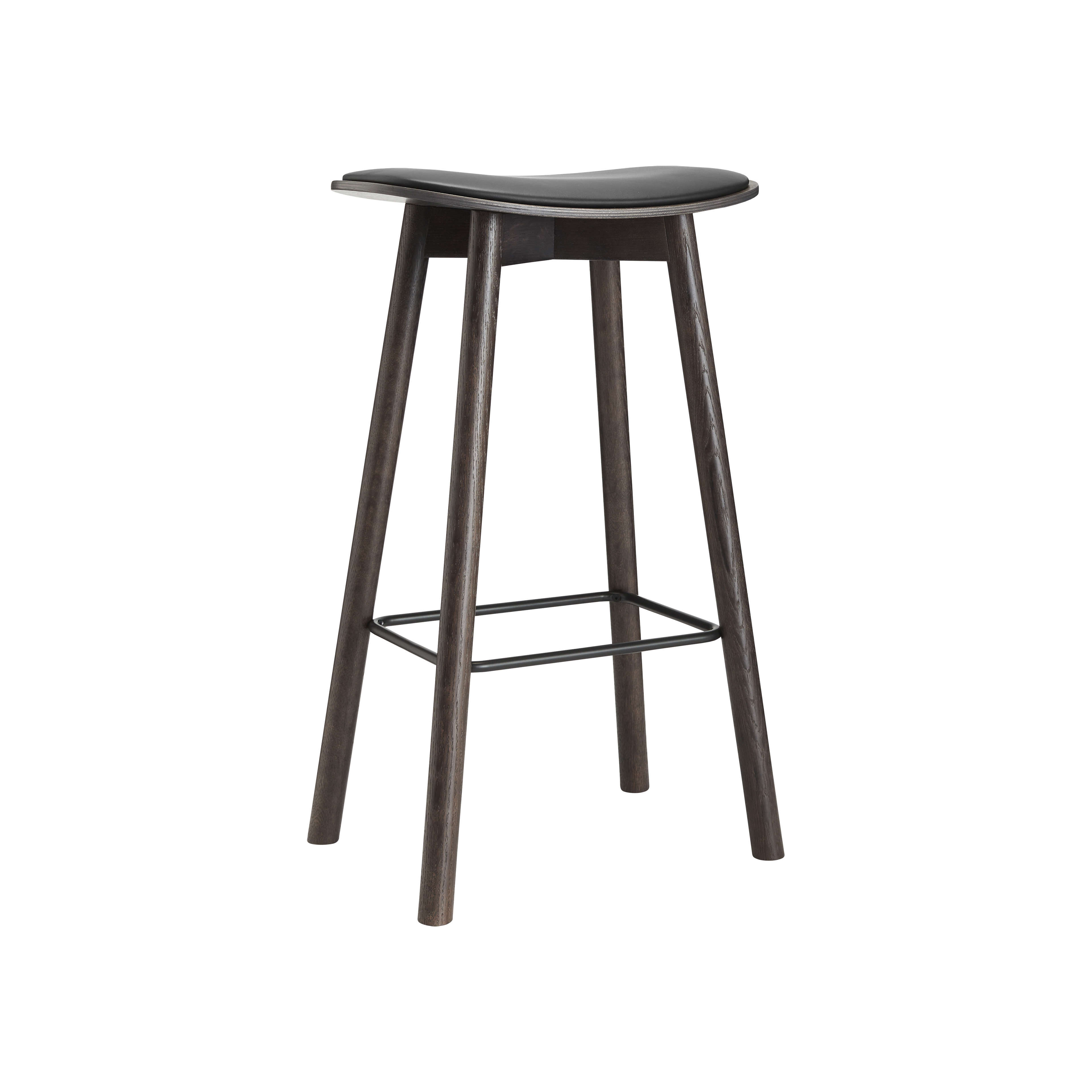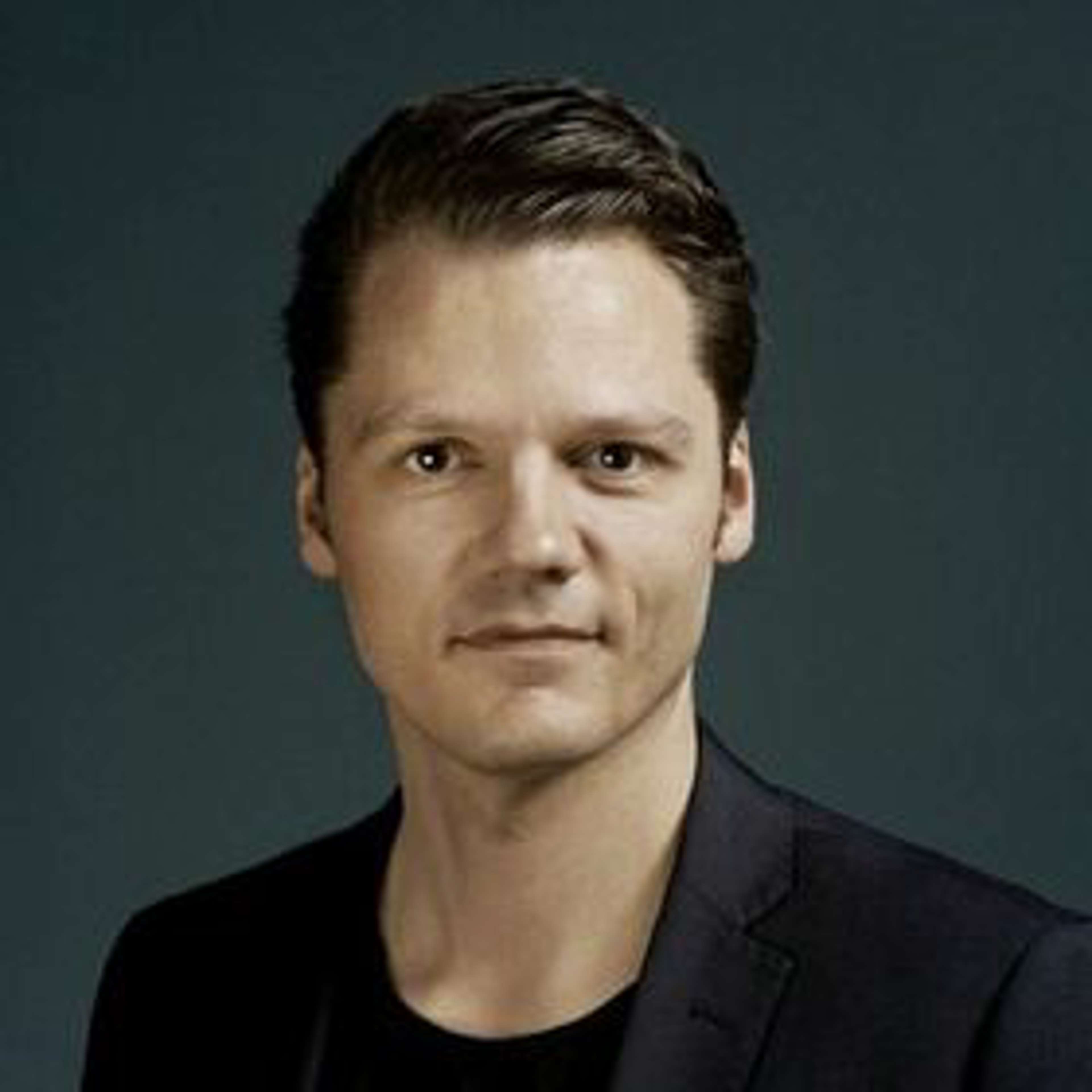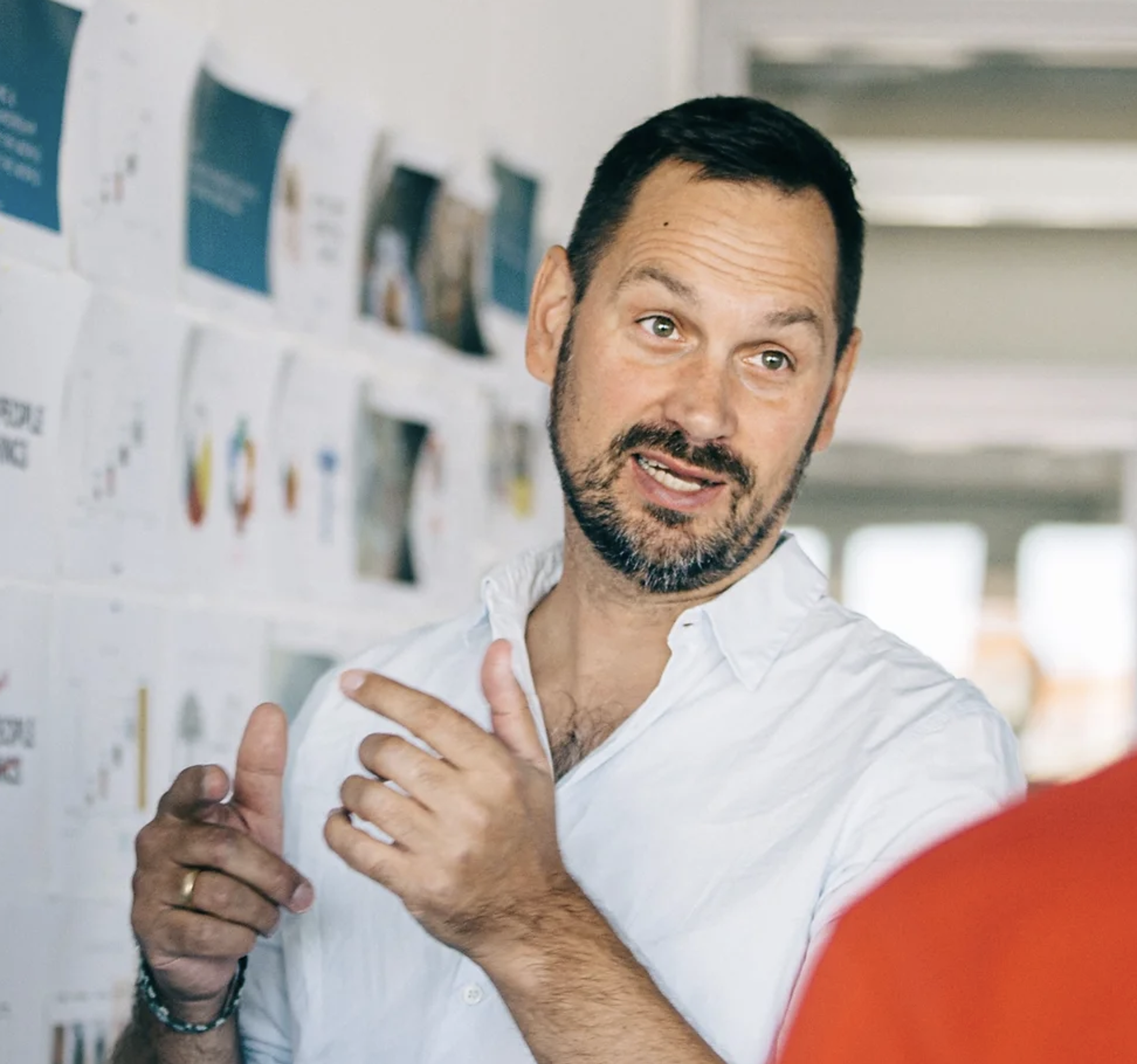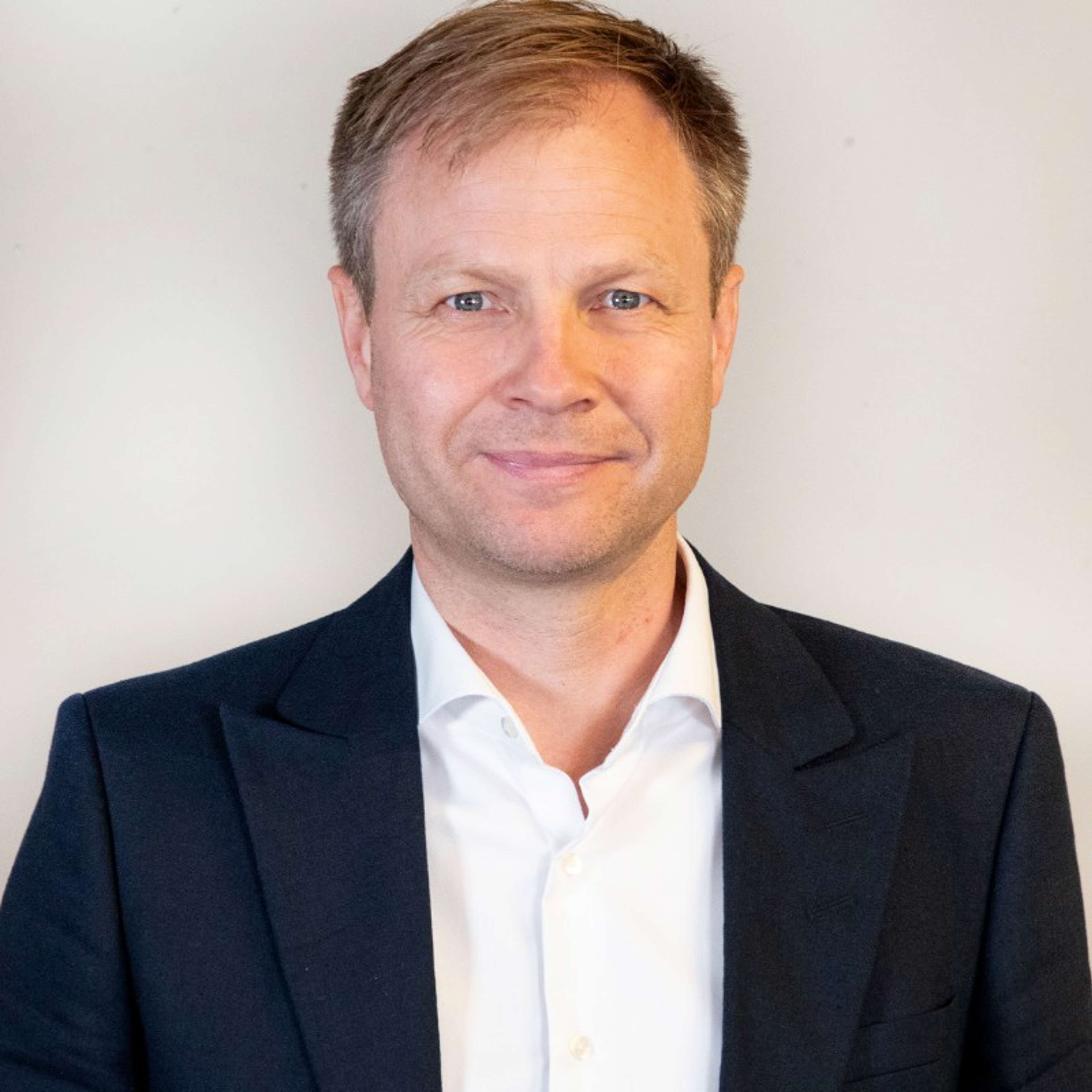
In our first episodes, we’ve looked back at the history of Danish design and the development of the Danish design DNA and now it’s time to turn to the question of what Danish design can do and more importantly, what it’s good at.
We started off asking designer Nikolaj Duve from Says Who. He’s the one who designed our popular green Ombra kitchen. He’s trained as an industrial designer, which is a bit of a different path than the big names of Danish design, who often were craftsmen or architects first.
*Please note that the text on this page is a transcript of the podcast episode.
An industrial design approach
Julie: Do you think that being an industrial designer, does that give you something else in it than if you had been classically trained as like a furniture designer from the beginning?
Nikolai: Personally, for me, I think the industrial design approach went or was just a natural stepping stone for me to enter this career because I guess to some extent, I'm logically wired, so that made a lot of sense. And the whole idea of, you know, researching, understanding, looking into a particular problem from sort of a structured approach and crystallising like findings, insights, something that would surprise you, that would be a problem to solve, basically.
I think it's just a really productive and a really good approach to do industrial design. Because at the end of the day, at least, that's what drives me, is to solve something and make either something better or introduce something that, you know, resonates with a problem, and of course the third problem can be very wide. A chair.
Julie: And it isn't necessarily a negative problem, it's the problem can be, “where does one sit?”
Nikolaj: No, no, no. It's just you know exactly like the chair has been there forever, right? And it still has four legs and has a seat and has a back. And there's not to say a problem, but there's still an evolution going on that you need to be mindful of. So maybe the scale or the optics of solving something that is maybe aesthetically more problem-based rather than maybe a classic, real problem-based process where you would might have to solve let's say, for somebody that's disabled, then a chair would be a completely different type of project, right? Because then there would be some really factual concrete issues to solve that would then at least influence the result.
Julie: But, but isn't it also some somehow in Danish design like the problems that the chairs, the classic chairs all solved were also problems of manufacturing, right? It's like how do we how can we efficiently manufacture this? How can we mass produce it but have it still look beautiful? I mean, it isn't entirely foreign to...
Nikolai: No, no, no, no. I think actually industrial design, you know all as it started then you know. Because but you're right. It started out of the necessity right post Second World War. Yeah. So a lot of designers were looking into manufacturing processes. You know that there's a technical development going on which we need to tap into in order to move forward. So that became a lot of the classics that we know today. That's an industrial design approach as well for.

More designs by Nikolaj and SaysWho

Jigger light oak beige

Barley light oak

Barley light oak leather

Barley dark oak leather
As we delve deeper into the heart of Danish design philosophy, we're reminded that design isn't solely about crafting beautiful objects, or only about getting from A to B. It's about understanding and reshaping human interactions, environments, and systems.
Moving from the realm of physical aesthetics, we now venture into a realm where design becomes a means for fostering human connections and altering perceptions. We spoke with Sune Kjems about how Danish design principles can transform even the most challenging environments.
Applying Danish design principles to prisons
Sune: I used to work in in Danish prisons. And the environment, the climate, between inmates and guards are quite hostile and quite assume negative intent from both sides, so they see themselves as enemies.
Julie: From both sides...
Sune: Maybe they don't even see them...the other part as a human being. So you can go into a prison and say, okay, this is not a friendly environment, let's paint the walls in a nice colour or buy some plants or... But you can also try to engage and say this is actually very harmful, this view of the other part. And that's what we did. We make them understand that they are part of the same everyday environment. And you are stuck here - either because you have a job to do or because you are put there.
So why don't you try to understand the other part and see that you are influencing the other part in a negative way? So if you can change that dynamic, you could actually have a win-win situation. So instead of designing more traditional design solutions, we designed a program where inmates and guards do sports together.
Julie: Oh, interesting. Okay.
Sune: So you eliminate the hierarchy, or at least introduce another hierarchy where it's not necessarily the guards who are in top of the situation. And so you have fun and you have something that both parts want to protect because it's a free space where you don't fear the other part either because of violence or because of the power the other part has over you. So in this case it's about designing something that they want to protect together.
Julie: And did it work?
Sune: It was amazing it so it reduces the violence to actually zero in the most violent prison in Denmark.
Photo credit: Kriminalforsorgen

Julie: That's an amazing result. Sune offers a compelling perspective on designing not just objects, but relationships and dynamics.
As we learn from his experiences, we're reminded that the best design often transcends the tangible, touching lives and mending divides. Design can be transformative. What it often comes down to is getting the right people to work together. Lars Thøgersen from the Danish Design Council agrees.
Lars: That is wonderful. It goes back to, you know, when you hire someone to hire, always someone that is more clever than yourself. Which is very easy when you're me. Because I don't know much, but I know much about a lot. But I don't know it in depth, so I always work together with researchers and people that really know something in depth. They might not know so much else, but they know something really, really in depth that you can count on and that is that has been a true, great experience in my professional life to work together with knowledgeable people.
And now it's time to turn to our own knowledgeable people. We thought a lot about people and how they live and work together in their kitchens when we designed The Sociable Kitchen®. It's not just the name of our podcast, it's also the name of the philosophy behind all of our kitchens. It arose because we took a close look at how people really live in their kitchens. We came to understand that the majority of the tasks you do in the kitchen take place at the sink. So it's important that the sink faces the room so that the person working at the sink can be part of the conversations that are happening in the room.
Our Head of Design, Claus Johnsen, spoke to us about how all his knowledge of The Sociable Kitchen® went into planning his own new kitchen.
It had to be a Sociable Kitchen®
Claus: Yeah, I would say when I chose my kitchen at home, that was the only thing I was 100% sure of - that it had to be a Sociable Kitchen®.
Julie: Right, which is what?
Claus: Which is for me who's having an island and place the sink on an island. So when I stand by the sink, I face my family. That was it was set in stone. The rest was a little bit fluffy. It came down the road. But having a Sociable Kitchen® was a decision that was made even before we decided to have a new kitchen, I would say.
And where is it going? At Kvik, we really have a true interest in how people live in their homes and how they work in their kitchen, etc. And so we follow that and monitor it.
Julie: How do you do that?
Claus: You talk to people, that's one way of doing it, but you can also for example now we just talked about the smart appliances and the Wi-Fi enabling we could see before Corona, for example, nobody was using that because Siemens and these big players, they can see when you activate your device. Nobody was really doing it but then during Corona all of a sudden people started to activate their devices
Julie: Because they were home to play with it?
Claus: And I think the man was in the kitchen too, all of a sudden because then he wanted to play with the controls.
Julie: Okay, right. So he wants to control it from his phone?
Claus: So we get an indication that it's now it’s more people in there. We also know that people are telling us that now I invite my daughter to bake cookies, et cetera.
So more people are in the kitchen. So I think The Sociable Kitchen® and the fusion of the old fashioned work triangle where you take some logistic principles into consideration when planning the kitchen. That's pretty smart.
Just to give you an example of where what I did with my kitchen, I have the sink in an island so I stand there a lot of the time. Most of the time in the kitchen you stand by the sink. I face my family then. If my son and daughter are in the kitchen, I have a waste bin system that is not under the sink. It's moved away. It's moved to the side so they can open it without interrupting.
Julie: Without interrupting who’s at the sink?
Claus: Exactly. Yeah. So thinking about these things is cool. I cannot imagine not having a Sociable Kitchen® in our house.
Photo credit: Claus Johnsen

And there we have it. Today's episode delved into the very essence of the philosophy of Danish design, showcasing its versatility, adaptability, and holistic approach.
We began by immersing ourselves in Nikolaj’s insightful view on approaches to design, the evolution of chair design, and the essence of Danish design in today's rapidly evolving aesthetic landscape.
Sune enlightened us about his venture into designing relationships and dynamics in Danish prisons, offering a profound perspective on how the essence of Danish design can mend divides and reduce violence.
Then Lars enlightened us about the value of collaboration and knowledge. His approach of always working with people who bring depth of knowledge to the table underscores the collaborative spirit of the design industry in Denmark.
And lastly Claus took us on a journey of what it truly means to design kitchens that are sociable. At the heart of The Sociable Kitchen® philosophy lies the idea that a kitchen should be more than just a place for cooking—it should foster connection and conversation. Claus's passion for creating spaces that promote connection gave us a window into the depths of the Danish design thinking at play in our kitchens. And as we learned, the ripple effect of such design philosophy has been far-reaching, revolutionising the way we perceive and utilise our living spaces.
In essence, today's episode was a masterclass in the profound impact of thoughtful design, whether it's in the cells of a prison or the heart of our homes—the kitchen. Danish design isn't just about aesthetics; it's a way of thinking, living, and interacting. And as we've learned, when done right, it can transform spaces, perceptions, and lives.
In our next episode, we’re going to delve into how Danish design is perfectly suited to co-creation. If you haven’t hit subscribe, please do so now. And if you like what you’ve heard, please rate and review us on Apple podcasts or the podcast platform of your choice. Thank you so much for listening! Stay inspired and keep those great conversations flowing!
I’d like to leave you with a recommendation for another podcast to listen to. If you love kitchens, I highly recommend the new podcast, Your Mama’s Kitchen with Michele Norris. Her first episode features Michelle Obama and will remind you of all the ways some of the most important moments of our lives happen in our kitchens.
Featured in this episode

Nikolaj Duve
Head of Design & Co-Founder, SaysWho

Sune Kjems
Founding Partner, Via Design

Lars Thøgersen
Industrial Designer and former Chair of the Danish Design Council

Claus Johnsen
Head of Design at Kvik